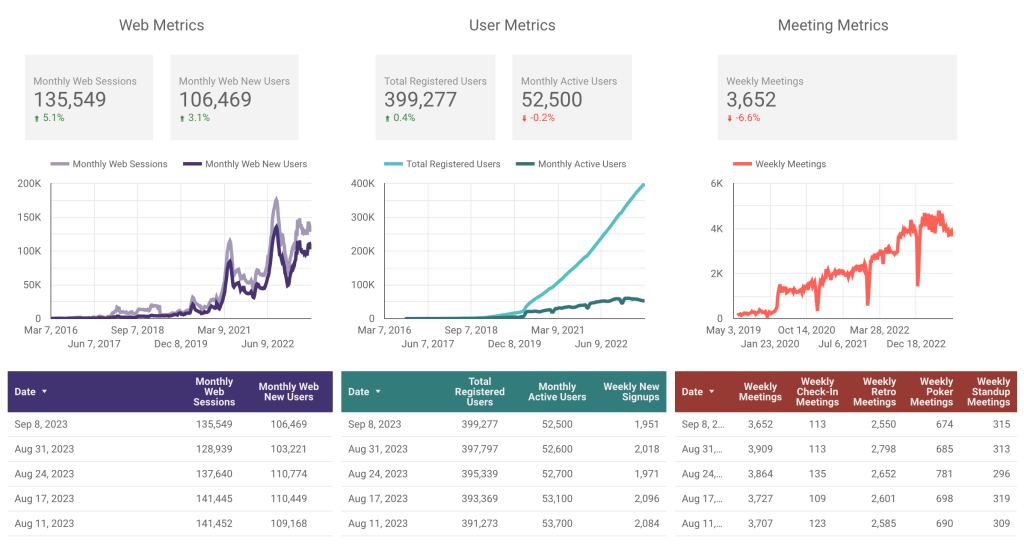#364 – Starting With Ground Truth
Friday Ship #364 | September 8th, 2023

Reflecting on this week at Parabol, I’ve been reminded of the wisdom of seeking ground truth as an initial step when dealing with problems. Perhaps this is most useful with dealing with what we find to be big, important problems. In the spirit of a Friday Ship post, I’ll briefly share my mental model on the topic.
We’re looking to manage some behaviors in how we deal with the challenges we face. How much time do we spend understanding the problem? How much change and effort do we introduce, and how quickly? What if we can’t agree on a direction forward? There are a few ways we can help with these tensions.
How long do we study the problem?
We need to take enough time to understand a problem before jumping to conclusions and reaching for solutions that may be misguided. However, taking too long to study a problem can be draining. Taking some action can boost our energy and attitude for working with the issue.
Try running the problem, including key details, by a group that you trust to give good feedback on the challenge. See what questions come up. Determine if answering any of those will help you find a better path forward.
Decide if you know enough to take action. If not, what is the critical missing information and can you obtain it with reasonable time and effort? Make that your first action. Work quickly to learn as much as you need to know, being aware of marginal gains, so that you can start working on solutions.
What solutions do we reach for?
We may feel the need to reach for a big solution to a big problem. Often it’s the case that we just need to make some iterative changes. We don’t want to throw out what’s working. How can we break down the opportunities and, therefore, the work? Here are a few ideas to get on the right track.
Reach out to a group you trust and get ideas on how to solve for the issue. Try asking for the single change they would make. Sometimes we want to solve a lot at once. This forces us to focus on what may be most important to solve.
Try taking the easiest next step with the most potential impact. Some ideas may not have as big of an impact. Some ideas may require too much time and effort and need to be included over time. Qualifying your list of ideas by effort and impact can help you narrow down where to start.
In many cases different people can work in parallel on more than one task related to your challenge. Working as a team can improve speed of progress and learnings, and boost overall morale.
Where are we headed anyway?
In light of our challenges, we imagine some future where our expectations are met. One tension that can surface is that folks can have unique perspectives of what that future looks like. Sometimes there are competing ideas for how to address a problem. How can we get on enough of the same page to make progress?
Do we have some degree of shared vision for what a good direction is? We might start by identifying what details are most important to each individual and focus on the details where we are aligned. We can also identify the outliers and time-box some discussion on what some acceptable tradeoffs might be.
In some cases you may be able to run an A/B test of competing ideas, or to validate ideas where there isn’t enough confidence before committing further.
Taking initial steps in a direction that is good enough should help you learn more, make improvements, and also allow you to reevaluate if the direction is truly where you want to go.
Each step of the way is a new ground truth
The idea of ground truth serves as our starting point in the direction of what should be new ground truths tomorrow, next month, or next year. Try imagining the future you want to see and working backwards. Try imagining the first step toward that future.
At each step of the way, check for new learnings. On occasion, reevaluate whether or not the final destination is still what you’re aiming for. You may find an opportunity to adapt toward a better destination based on the new information and perspective you’ve gained along the way.
Remember that steady, meaningful progress is much more energizing than getting stuck on what might be perfect.
These are just a few strategies for addressing big challenges by learning just enough, pacing your efforts, and finding common ground in what a better future looks like. What are your favorite principles for addressing big challenges?
Metrics

Web traffic saw a little uptick, but product usage is a little sluggish – perhaps due to the US & CA holiday on Monday.
This week we…
…published a demo video on how to run retrospectives in Parabol.
…saw new governance proposals focused on roles and leveling.
…reviewed and reflected on our August sales performance.
Next week we’ll
…publish new blog and video content.
